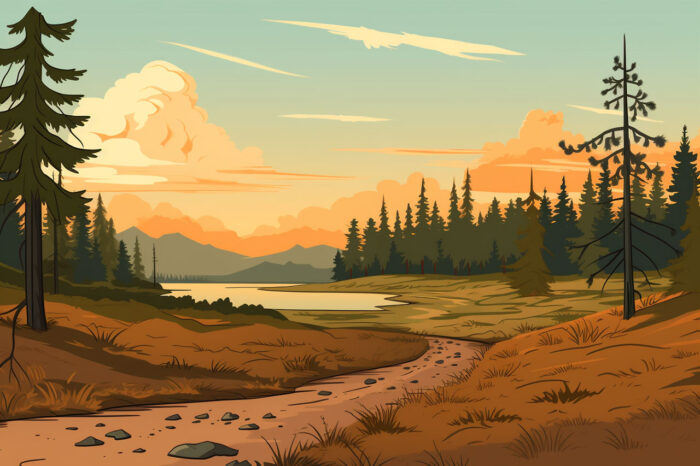Creating captivating scenes is the key to developing a successful story. It doesn’t matter if it’s a movie, novel, or play; if the scene isn’t engaging, it can sink the entire narrative. A good scene should include a vivid setting and meaningful character interactions, elevate the plot, and leave the audience wanting more. Crafting such scenes requires a mastery of backgrounds and environments.
Backgrounds are the visual elements of a story. They are the colors, textures, and props that set the tone of the scene. They give the audience insight into the setting’s time period, geographic location, and the characters’ lifestyles. It’s important to be mindful of the audience’s expectations and to create scenery that enhances the story’s purpose.
Environments are the spaces that the characters inhabit. They can be indoors or outdoors, and they can be as small as a jail cell or as large as an entire city. Knowing the space and how the characters interact with it will build tension and create a more immersive experience for the audience.
Every scene should have a purpose, and the elements of the setting should support that purpose. When constructing a scene, the storyteller should consider all of the elements that can influence the story, such as lighting, sound, and action. All of these elements should work together to create a unified and captivating experience.
Exploring Backgrounds and Environments
Creating a captivating scene starts with exploring the backgrounds and environments. To do this, the storyteller must consider the story’s purpose and how the setting can best serve it.
If the story is set in a particular time period, research that time period to gain a better understanding of the scenery and how the characters would interact with it. Think about how the architecture and technology would influence the scene. Consider the customs and culture of the era and how they would shape the characters’ behavior and the overall tone of the scene.
When exploring the environment, think about the myriad of possibilities that could influence the scene. If the setting is indoors, consider the furniture and decorations. If the setting is outdoors, consider the plants, animals, and weather. Take into account the time of day, the season, and even the geography. All of these elements will give the audience a more vivid experience.
The storyteller should also think about the characters and how they would interact with the environment. Each character should have a unique relationship to the setting, and the storyteller should think of ways to make those relationships meaningful.



Assembling Cohesive Scenes
Once the backgrounds and environments have been explored, the storyteller must assemble them into a cohesive scene. This means creating a balance between the visuals, the dialogue, and the actions.
It’s important to be mindful of the elements that make up the scene. Every element should serve a purpose and should be used to drive the story forward. The storyteller should think of ways to make the elements work together to create a more engaging experience.
The storyteller should also consider the pacing of the scene. While it’s important to be mindful of the details, it’s also important to move the story along. This means finding the perfect balance between action and dialogue.
The storyteller should also be mindful of the audience’s expectations. If the scene feels too slow, they should think of ways to make it feel more exciting. If the scene feels too fast, they should think of ways to slow it down and make it more meaningful.
Mastering the Art of Scene Creation
Creating cohesive scenes is an art form, and it takes time and practice to master. To be successful, the storyteller must have a clear understanding of the backgrounds and environments, and they must be able to assemble them into a captivating scene.
It’s important to be mindful of the audience’s expectations and to create scenes that have a purpose. Every element of the scene should work together to serve that purpose, and the storyteller should strive to create a balance between the visuals, dialogue, and actions.
Creating captivating scenes requires an understanding of the backgrounds and environments and the ability to craft meaningful moments. By mastering the art of scene creation, the storyteller will be able to create captivating stories that will engage and entertain the audience.